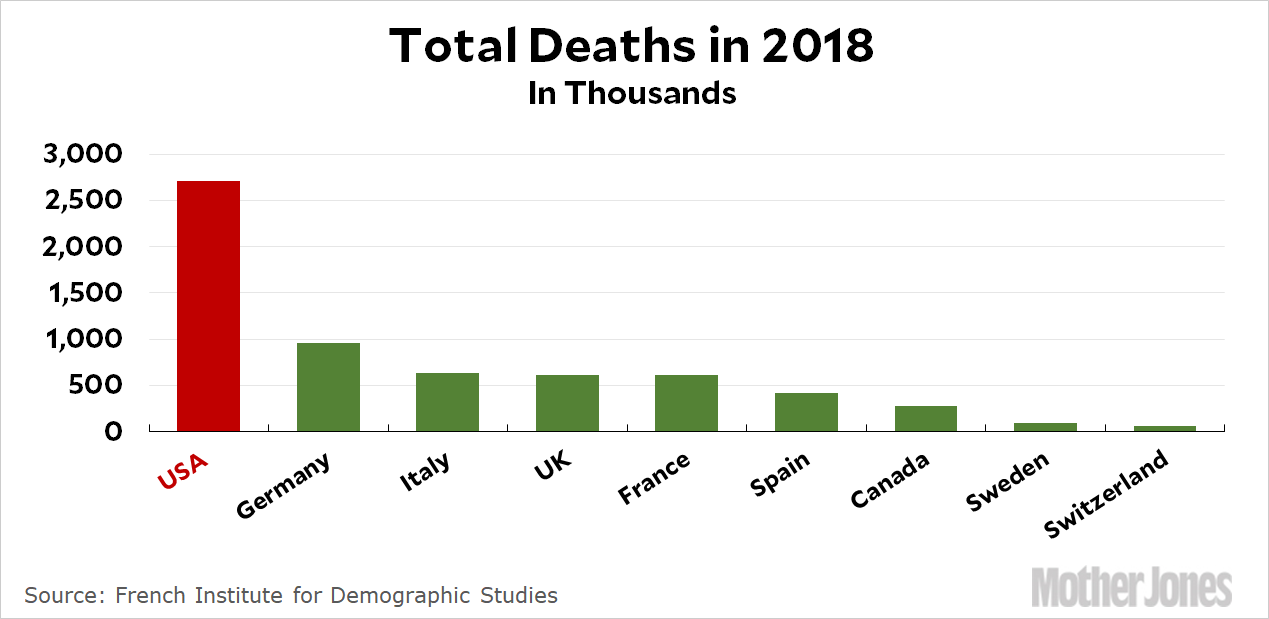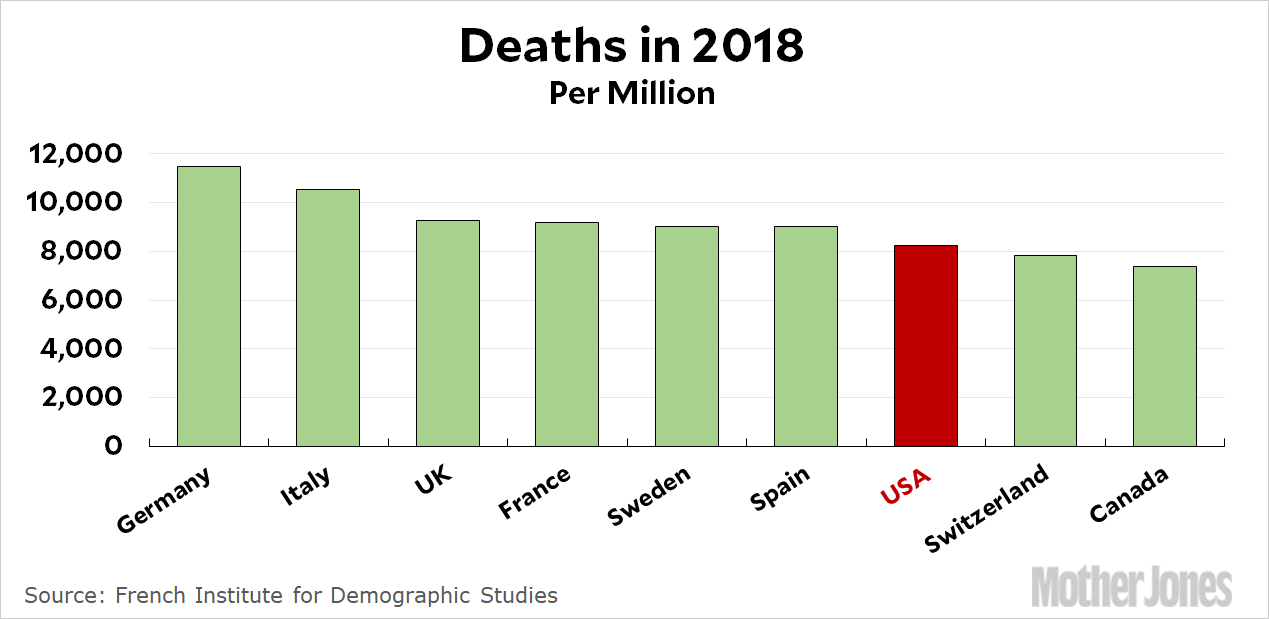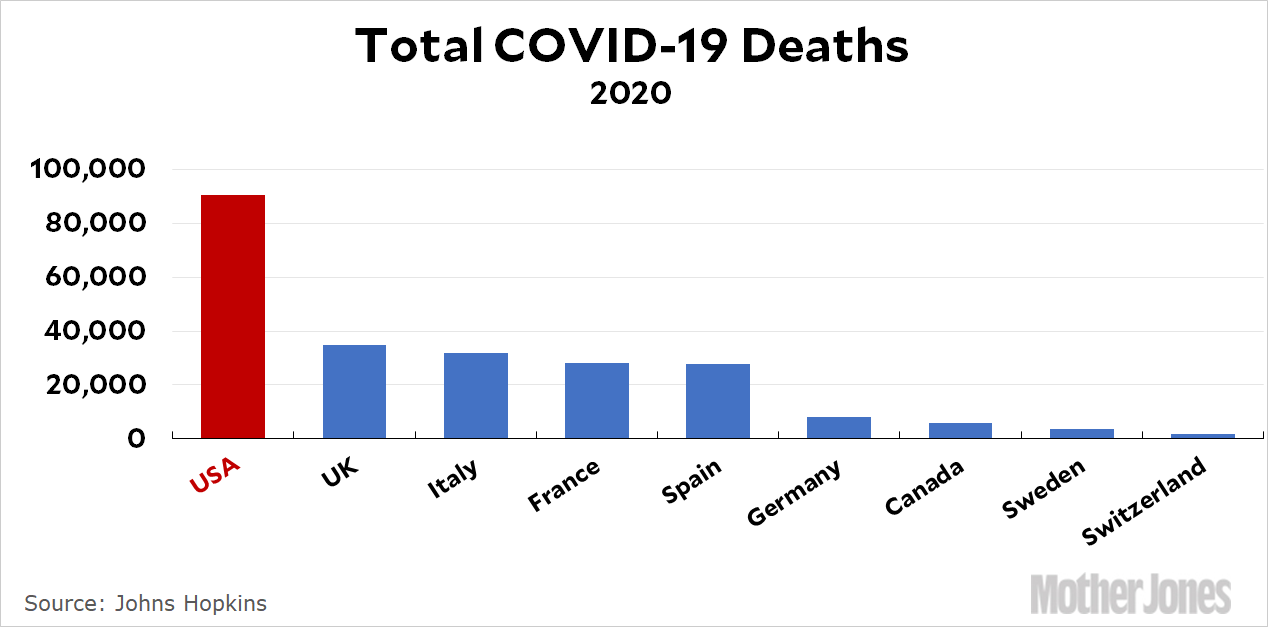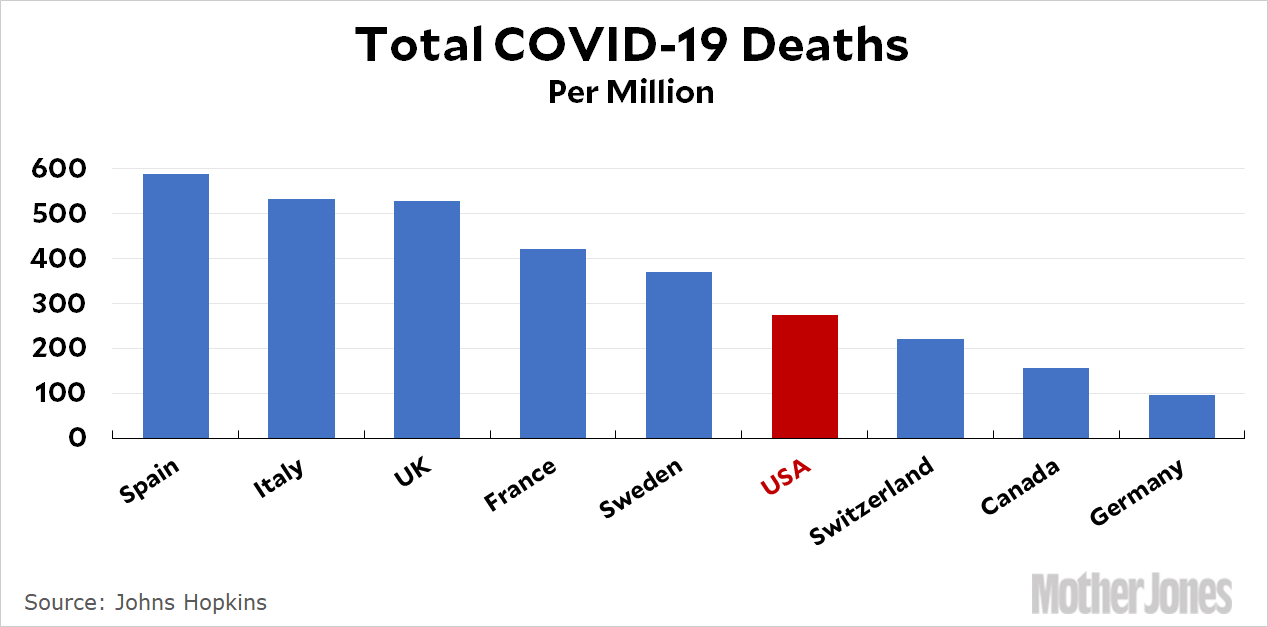This chart shows the total number of people who died in 2018 in nine different developed countries:

Yikes! People are dying like flies in the United States. What’s going on? Obesity? Lung cancer? Deaths of despair?
Of course not. We have a lot of deaths because we have a large population. Here’s the death toll per million:

As it happens, the US is a little below average in deaths per capita. This is probably because our population is a little younger than the other countries, but in any case, the differences aren’t huge.
Nobody in their right mind would present the top chart as evidence of anything much. It’s obviously meaningless thanks to the large range of populations. If you want to study death rates, you need to look at deaths per capita. The same thing applies to deaths from COVID-19:


Our death total of 90,000 sounds bad, but it’s mostly because we’re a big country. If you look at COVID-19 deaths per capita, as you should, we’re about average among developed Western countries.
This might not always be true, of course. If other countries have the virus under control while we see a resurgence next month, then our death rate per capita could become one of the highest. But it isn’t yet.

















